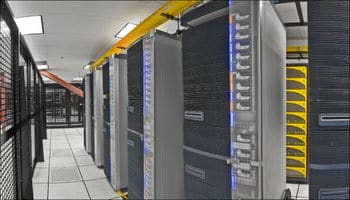Definition of Central Office (CO) in the Network Encyclopedia.
What is Central Office?
Central Office is the main switching facility for a telco, providing access to the Plain Old Telephone Service (POTS), leased lines, and circuit-switched services that the telco offers to customers.
The central office (CO) contains the switching equipment that connects telephone subscribers to both local and long-distance phone services.

Subscribers are connected to their local CO through a segment of wiring called the local loop. In countries other than the United States, a CO is often referred to as a public exchange.
How Central Office Works
A typical CO looks like a fortress built to withstand an earthquake or any other natural disaster. Building standards for COs are high because of the importance of the communications infrastructure to a nation’s economic health and safety. Banks of batteries and diesel generators provide backup power in case of blackouts so that phone communication will not be disrupted.
Multitudes of twisted-pair copper telephone lines from customer premises usually enter the building through the underground cable vault. These twisted-pair lines are grouped into bundles of thousands of lines, forming large cables 3 to 4 inches in diameter. The cables have grounding mesh to provide a drain for unwanted electrical surges and tough PVC (polyvinyl chloride) insulating jackets that are pressurized to prevent water from seeping in at cable junctions. Steel racks organize these cables as they enter the cable vault.
From the vault, the cables snake their way to the main cross-connect grid. It is in these steel-frame grids that all the individual twisted-pairs fan out and connect through feeders to the main switching equipment. The importance of the feeders is that they allow any incoming twisted-pair line to connect to virtually any switching bank.
This makes it possible for customers to move to a different part of the city and maintain their old telephone number at their new location. It also allows for redundancy: if a switch fails, a CO technician can rewire the feeder blocks quickly and easily. The main switches are then used to route calls to other local subscribers or to a long-distance telecommunications carrier such as AT&T or MCI WorldCom.